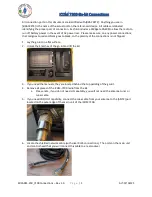
Application Note
3 of 19
002-27376 Rev. *A
2021-06-15
Getting Started with CXPI Transceiver S6BT112A
CXPI communication protocol
1
CXPI communication protocol
CXPI is a communication protocol that consists of three layers: application layer, data link layer, and physical
layer. It has the following features:
•
Non-destructive CSMA / CR (carrier sense multiple access/collision resolution) method that ensures high
responsiveness even when many nodes are connected. Similar to Controller Area Network (CAN), the CXPI
protocol provides for event transmission and communication between each node.
•
The slave node does not need an external oscillator to extract the data from the bus. It will use the master
clock because the master node sends a clock pulse with data and the slave node synchronizes with the
master clock bit by bit.
•
Most general
-
purpose microcontrollers supports CXPI because it uses UART PHY.
CXPI has the following main features:
•
Application layer
−
Supports sleep and wakeup
•
Data link layer
−
Communication through non-destructive type CSMA/CR
−
Uses 8 types of error detection including 8-bit /16-bit CRC
−
Supports non-destructive mediation of frames
•
Physical link layer
−
Bus type for network topology
−
Single line for communication
−
Maximum 16 nodes
−
Bus connection length: Maximum 40 m
−
Synchronized every PWM bit
−
Transfer rate: Maximum 20 kbps




































